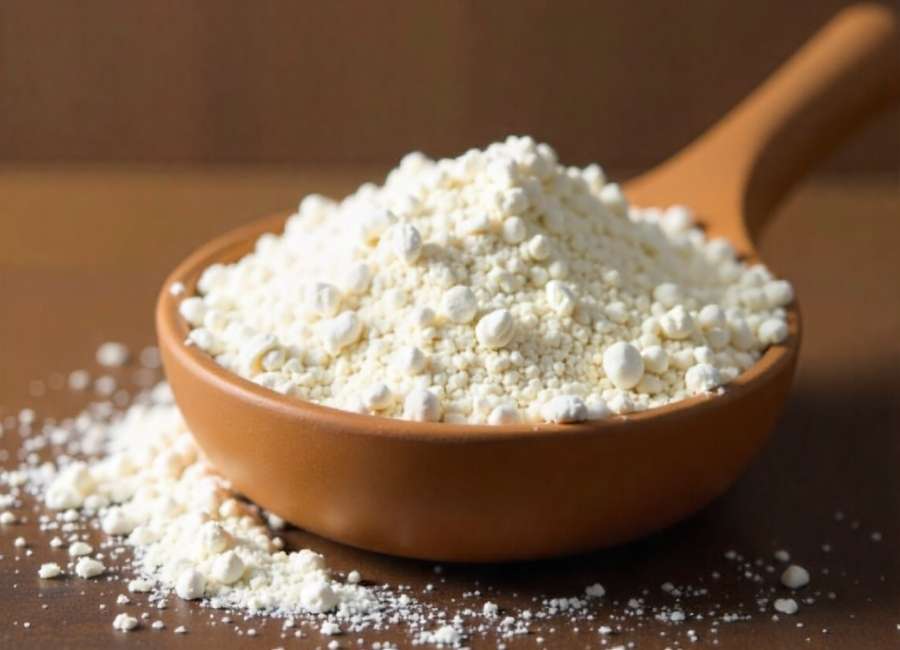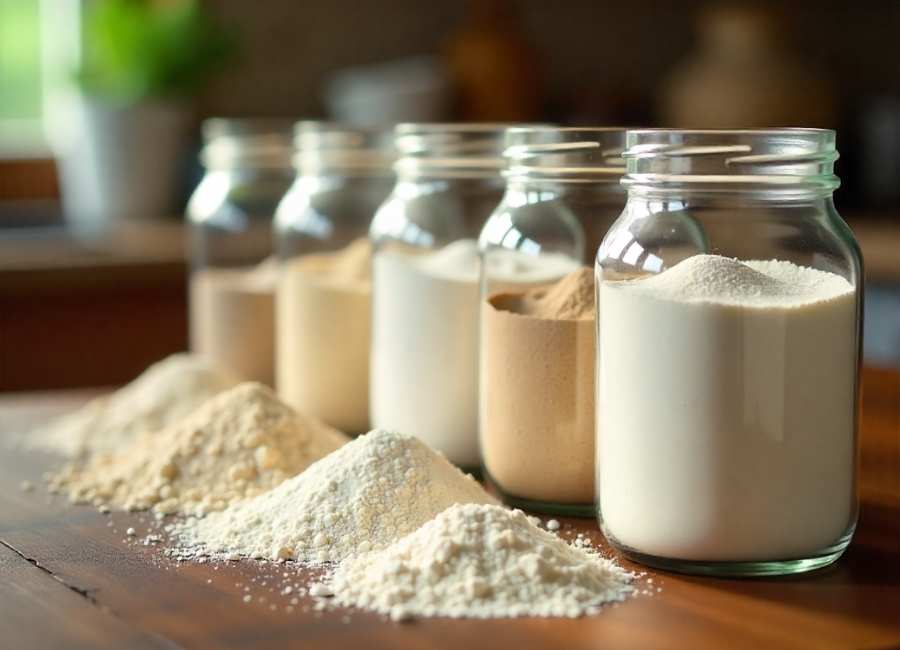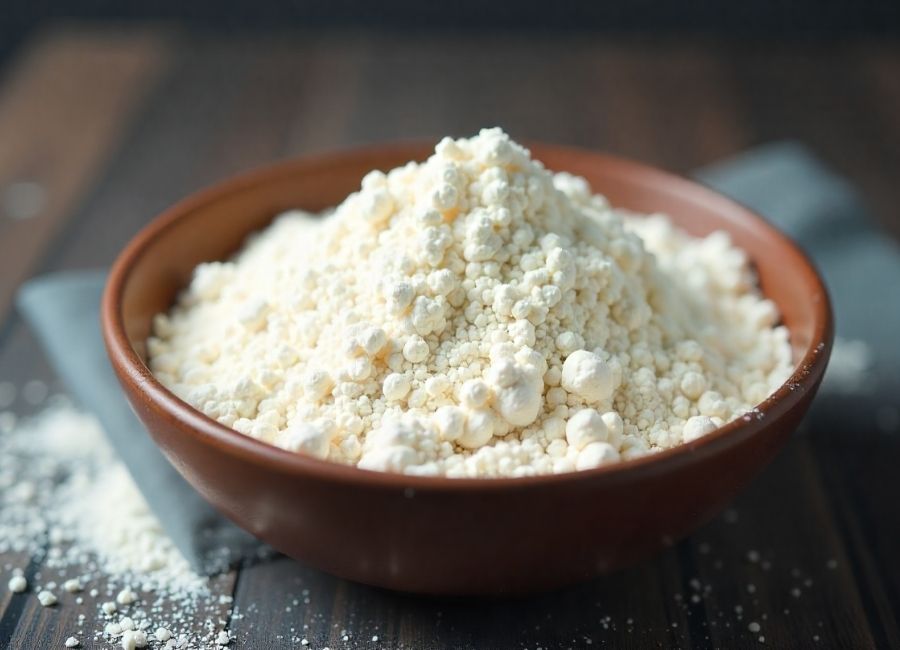Whether you’re an avid baker, a home chef, or someone keeping a close watch on your daily calorie intake, understanding the caloric content of flour is essential. Flour is a pantry staple in almost every household and forms the base of countless recipes. But how many calories does a cup of flour really have? The answer depends on the type of flour you’re using.
This blog breaks down the calorie content of different types of flour, explains the factors that affect these calorie levels, and provides tips to help you make healthier choices in your culinary creations.
Why Fluor Knowledge Matters
Flour plays a significant role in your diet if you cook or bake frequently. While it is a versatile ingredient, the caloric density of flour can impact dietary outcomes. If you’re calorie-conscious or aiming to adopt healthier eating habits, understanding these numbers can help you make informed nutritional decisions.
Calories in Common Types of Flour

When it comes to flour, one size does not fit all. Each type of flour offers unique calorie counts and nutritional profiles that suit specific recipes and dietary preferences. Here’s a closer look:
All-purpose Flour
All-purpose flour is the most commonly used variety in households. One cup of all-purpose flour (about 120 grams) contains approximately 455 calories. It is refined and typically lower in protein and fiber compared to whole grain options.
Whole Wheat Flour
A healthier and more wholesome option, whole wheat flour is less processed and retains more of the wheat kernel’s fiber, vitamins, and minerals. One cup of whole wheat flour contains around 407 calories. Additionally, its higher fiber content promotes better digestion and keeps you feeling fuller for longer.
Almond Flour
Ideal for those on low-carb or gluten-free diets, almond flour is made by finely grinding blanched almonds. One cup of almond flour has approximately 600 calories, which might seem high, but much of these come from healthy fats. It is also rich in protein, fiber, and vitamin E.
Coconut Flour
Coconut flour is another low-carb, gluten-free alternative that appeals to many health-conscious cooks. One cup of coconut flour contains roughly 480 calories. It is high in fiber and absorbs a lot of liquid, which means you’ll usually use less of it in recipes.
Oat Flour
Made from finely ground oats, oat flour is another option with a robust nutritional profile. One cup contains about 420 calories. It is rich in fiber, particularly beta-glucans, which help in cholesterol regulation.
Gluten-free Flour Blends
Gluten-free all-purpose flour blends typically combine ingredients like rice flour, potato starch, and tapioca. The calorie count in these blends can vary, but on average, one cup contains around 480 calories.
Factors That Influence Calorie Counts in Flour

The calorie count of flour varies depending on factors like processing methods and ingredient composition. Here’s what to consider:
Processing and Refinement:
Refined flours (like all-purpose flour) undergo processes that strip away bran and germ, leaving behind the starchy endosperm. This decreases fiber and nutrient content while retaining calories. Whole grain flours, on the other hand, are minimally processed and thus denser in fiber, slowing digestion and making you feel fuller.
Protein and Fiber Content:
Flours with higher protein and fiber content offer more satiety and nutritional benefits at similar calorie levels. Almond flour and whole wheat flour surpass their refined counterparts in these aspects.
Additives in Blends:
Gluten-free and specialized flours often contain a mix of ingredients to achieve desired textures and flavors. These additives can subtly affect the calorie count.
Liquid Absorption:
Some flours, like coconut flour, absorb more liquid, meaning less is required in recipes. This may influence the total number of calories in the final dish.
How to Choose the Right Flour for Your Needs

When selecting flour, consider your dietary goals, the recipe you’ll be using, and the nutritional benefits you aim to maximize. Here’s some guidance:
For Weight Management:
Opt for flours with higher fiber content, like whole wheat or oat flour, to help control hunger.
For Low-carb Diets:
Almond and coconut flour are great options for those following keto or paleo lifestyles.
For Baking Gluten-free Recipes:
Gluten-free blends or naturally gluten-free flours like almond and coconut flour work best.
For Everyday Versatility:
All-purpose flour remains a practical and widely available choice but should be used in moderation due to its lower nutritional value.
Tips for Using Flour in a Healthier Way
Here are a few strategies for making smarter flour choices:
- Blend Flours:
Mix healthier options like whole wheat or oat flour with refined flours to create a balance of texture and nutritional value.
- Portion Control:
Be mindful of portion sizes. Check recipes to ensure you’re not using excessive amounts of flour, which can rack up calories quickly.
- Experiment with Alternatives:
Substitute all-purpose flour with whole grain flours or low-carb options in recipes where the flavors complement each other. For example, almond or coconut flour pairs wonderfully with baked goods.
- Keep it Balanced:
When working with high-calorie flours like almond or coconut, balance the recipe with low-calorie ingredients such as fresh vegetables or fruits.
- Educate Yourself on Nutritional Labels:
Always read labels and understand the calorie and ingredient breakdown before purchasing specialty flours or blends.
Flour and Your Diet
Flour may be a foundational kitchen staple, but its impact on your overall diet should not be overlooked. By understanding the calorie content and nutritional nuances of different flour varieties, you can make choices that align with your lifestyle and health goals. Whether you’re baking a loaf of bread, thickening a sauce, or preparing a gluten-free treat, there’s a flour for every need.
Start Experimenting Today
Is it time to give your cooking habits a healthy twist? Begin by swapping out traditional refined flours for whole grain or alternative options to add more nutrients to your meals. The more you experiment, the more you’ll learn which flours work best for your recipes and dietary needs.








